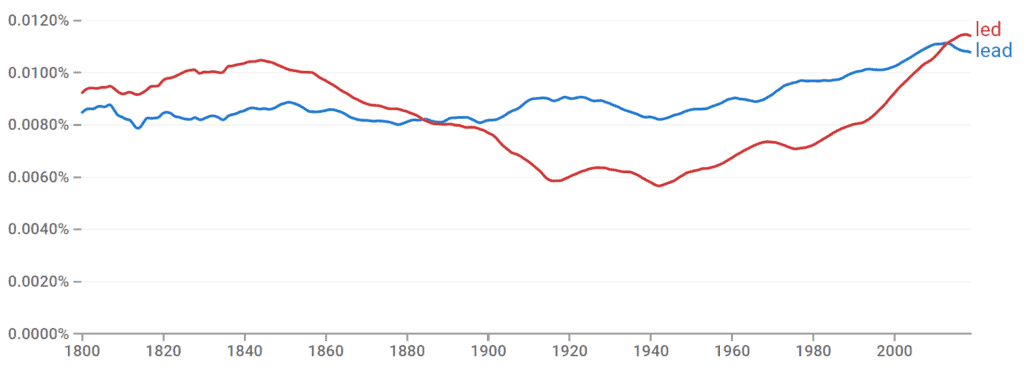English words can sometimes be confusing because of their multiple definitions and pronunciations. Two words that might come to mind are lead and led.
It sounds simple, but I even get them mixed up after writing for over a decade.
Learn the difference between lead and led in terms of their verb tenses and other meanings. And I have some examples of how to use the two words in sentences to help you out.
Led vs. Lead: What’s the Difference?
Lead and led are verbs with the same meaning: to cause a person or animal to go with one. Another meaning of both words is to guide or direct in a course.
The main difference between the two is their tenses. Lead is in the present tense, while led is in the past tense. For instance, one may lead a group today while the other led yesterday.
I know a lot of writers who confuse the two words because led has the same pronunciation as the noun lead, which is a type of toxic metal or chemical element. Lead may also refer to any item made of lead, such as a pencil.
Remember that the verb form lead rhymes with need or bead. That means it has a long e sound. But the noun lead rhymes with led and red with a short e sound.
Lead with the long e sound can also be an adjective meaning principal or leading. For instance, Harry Styles is the lead singer of the boyband One Direction.
Led can also be used in infinitive phrases or the passive voice. Instead of saying you are being lead, you should say you are being led. LED can also be an acronym that means light-emitting diode.
Led in a Sentence
Here are some English language examples of led in a sentence:
- The priest led the Eucharistic celebration. (Led as the past form of lead)
- You led me to believe I was getting a discount. (Led as the past form of lead)
- Teenagers enjoy decorating their bedrooms with LED lights. (LED as the acronym)
- Lead is a type of metal and its poisoning is a serious issue. (Lead as the metallic element)
Lead in a Sentence
Here are some examples of lead in a sentence:
- Parents should lead their children into forming values and beliefs. (Lead as the base form of the active verb lead)
- They lead the country. (Lead as the simple present form)
- We lead a peaceful existence. (Lead as the simple present form)
- Lead can be found in consumer products. (Lead as a noun)
- Let the podcast team lead the discussion. (Lead in the verb sense)
Remembering the Difference
The best trick, in my opinion, to remember the difference between lead and led is to check the length of words. The longer word, lead, has a long e sound. Its verb tense, present, is also a long word. Meanwhile, led has a short e sound with a short verb tense, which is past.
Led Yesterday, Lead Today
If you’ve tried everything and the two words still confuse you, just remember the phrase led yesterday, lead today. It will help you recall that:
- Led is the past form of lead with a short e sound.
- Lead is the base or present form of lead with a long e sound.
What other English words do you find confusing?

